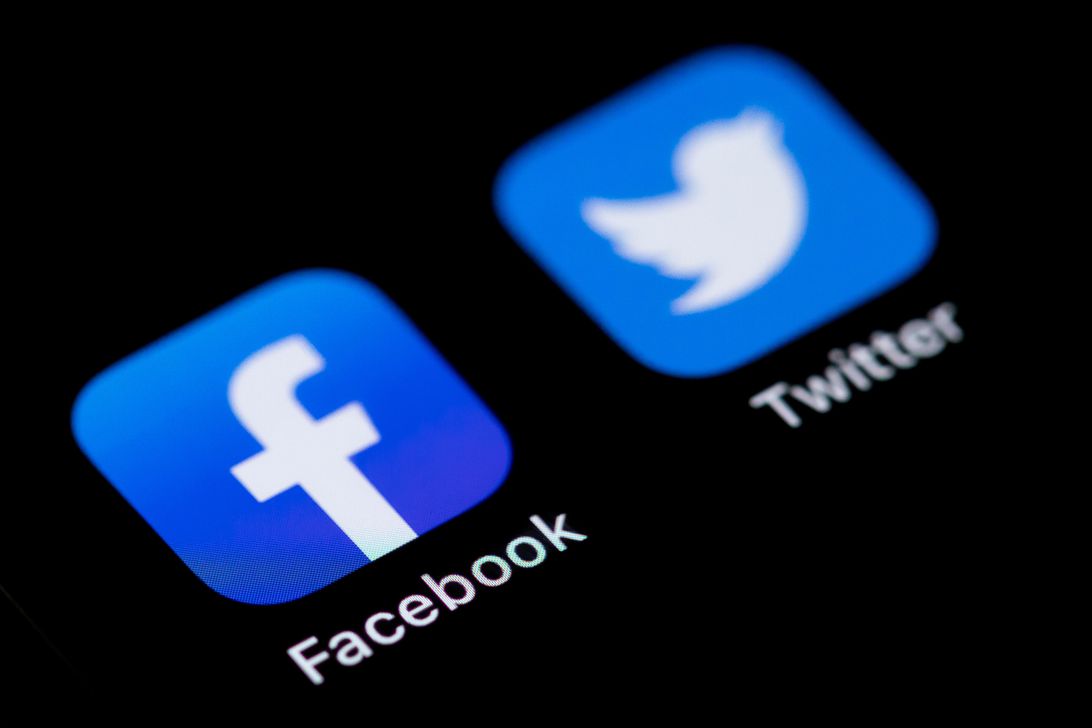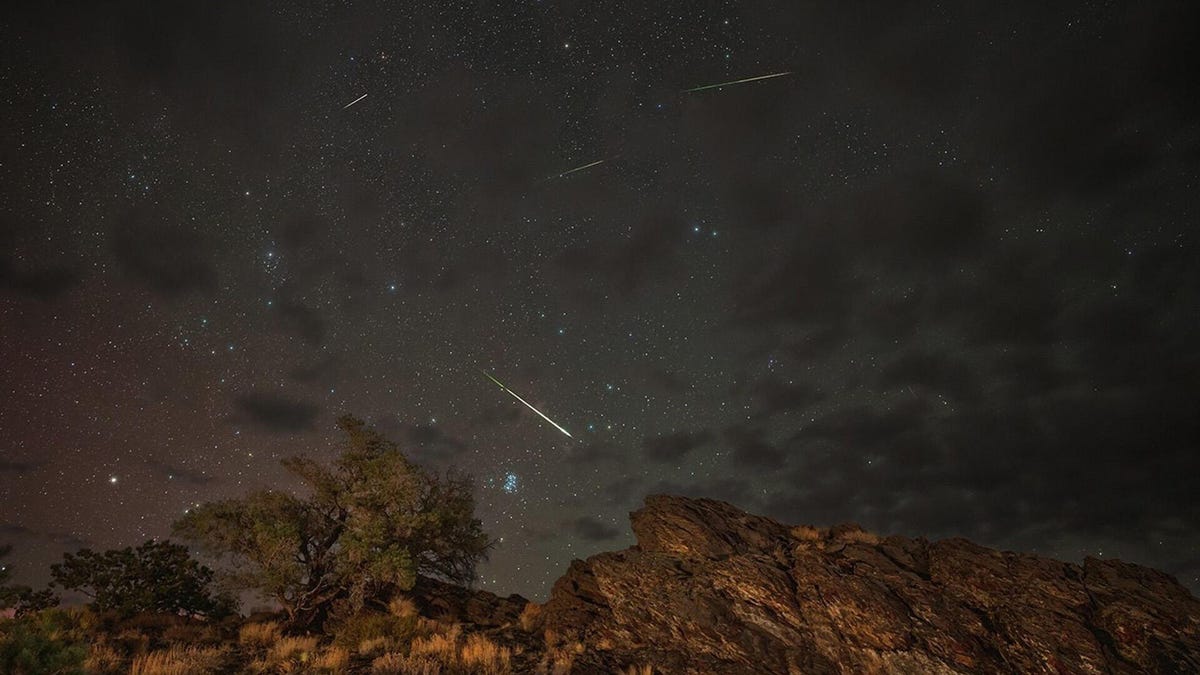Technologies
Facebook, Twitter and YouTube face content challenges as Afghanistan falls
From fact-checking to labels, social networks are being put to the test yet again.

A CNN reporter stands in front of a photo of a helicopter flying over the US embassy in Kabul, Afghanistan, a city that has fallen into chaos. Underneath the image, a caption states: «Violent but mostly peaceful transfer of power.»
The image, supposedly a screengrab of the network, circulated widely on Facebook, Twitter and other social media, prompting questions about its authenticity. How could the transfer be considered peaceful, some wondered. Was the language meant to be satire?
Turns out the image was fake.
Reuters and Politifact both fact-checked the image and concluded that it, like so many photos before it, had been digitally altered. The doctored image borrowed a screenshot of CNN correspondent Omar Jimenez from a 2020 broadcast of protests in Kenosha, Wisconsin, over a police shooting. At the time, some conservatives criticized CNN for running the caption «Fiery but mostly peaceful protests after police shooting.»
Altered images and video, such as a doctored version of a Nancy Pelosi speech that made the House Speaker appear drunk, have plagued Facebook and Twitter for years. Now the problem is resurfacing as news pours out of Afghanistan, which quickly fell into turmoil as the US wound down a 20-year war. Just as before, social media outlets are resorting to labels and warnings to caution users about faked content.
On Sunday, Taliban fighters took over Kabul, the capital, and President Ashraf Ghani fled the country. Violence erupted at the city’s international airport, with videos spreading through social media of people clinging to a US military aircraft as it took off and others falling from another plane midair. The Associated Press, citing US senior military officials, reported that at least seven people died at the airport.
The upheaval in Afghanistan poses a set of familiar challenges to social networks, which monitor their platforms for offensive content including graphic imagery. Some Facebook videos of people falling from planes warned users the content didn’t violate its rules but might include violent or graphic content. Similar videos appeared on Twitter and TikTok without a label.
On Facebook and its photo-sharing service Instagram, the doctored CNN image was labeled as altered. «Independent fact-checkers say this information could mislead people,» the label said. The fake CNN caption was also used as a title in a YouTube video with different video footage, and the altered image also spread throughout Twitter, which didn’t add a label. YouTube didn’t label the video and said the video didn’t violate its rules.
Instagram boss: ‘The risk will evolve’
Adam Mosseri, who runs Instagram, told Bloomberg Television that the photo-sharing service bans posts promoting the Taliban, which is covered by its dangerous-organization policies because of US government sanctions.
«We are relying on that policy to proactively take down anything that we can that might be dangerous or that is related to the Taliban in general,» Mosseri said. «Now this situation is evolving rapidly, and with it I’m sure the risk will evolve as well. We are going to have to modify what we do and how we do it to respond to those changing risks as they happen.»
A Facebook spokesman said the company has a dedicated team, «including Afghan nationals and native Dari and Pashto speakers,» to assess the situation in real time.
«Our teams continue to monitor the situation on the ground in Afghanistan, in consultation with our partners, and will take action on any content that violates these policies,» the spokesman said in a statement. Facebook’s online rules prohibit glorifying violence or celebrating the suffering of others but note that it will include a warning screen for some gory content.
Facebook also noted that it bars the Taliban from its services because they’re «sanctioned as a terrorist organization under US law.» The social media giant owns messaging app WhatsApp and reportedly blocked a number being used by the Taliban that’s meant to be a hotline for civilians to report violence, looting and other problems, according to The Financial Times.
From April to June, the social network took action on 7 million pieces of content that contained terrorism, according to Facebook’s Community Standards Enforcement Report released on Wednesday. Facebook didn’t say how much of that content was Taliban-related. The New York Times reported on Wednesday it found more than 100 new accounts and pages on Facebook and Twitter that claim to belong to the Taliban or expressed support for the group.
On YouTube, some news outlets added their own warnings at the beginning of videos that cautioned users the imagery was graphic. But not all did. YouTube added age restrictions and a label to a video of people falling from a plane that was posted by the Hindustan Times, a big Indian newspaper. The label noted the «video may be inappropriate for some users.»
YouTube’s rules don’t allow violent, graphic or shocking content, though they make exceptions for content that is educational, documentary, artistic or scientific. The company said it also surfaces videos from authoritative sources during breaking news events.
In a statement, a YouTube spokesperson said the video-sharing platform would «terminate» accounts it believes are owned and operated by the Taliban because of sanctions and trade compliance laws.
Twitter pointed to its policies against violent organizations and hateful conduct. The company received criticism from some conservatives for allowing Taliban spokesman Zabihullah Mujahid to use its platform. Some activists accused the Taliban of «trying to fish for legitimacy» and pushing out information that conflicts with news reports. The company didn’t immediately answer questions about whether the account violated its rules.
The company has been testing a forum called Birdwatch that lets users flag tweets and write notes with more context. Some of the notes included content about Afghanistan.
In one tweet that was rated as both «not misleading» and «potentially misleading,» Sen. Marco Rubio, a Florida Republican, tweeted that US President Joe Biden «apparently» had «no plans» to speak about Afghanistan. Both of the notes said Rubio tweeted before Biden announced he would be speaking about the topic later on Monday.
Other tweets users rated as misleading note that a video shared by some high-profile conservatives, including US Sen. Ted Cruz, a Texas Republican, «attempt to frame CNN as proponents of the Taliban and their take-over of Afghanistan.» The video shows CNN correspondent Clarissa Ward reporting that Taliban fighters are «just chanting death to America, but they seem friendly at the same time. It’s utterly bizarre.»
TikTok didn’t immediately respond to questions about how it’s moderating content about Afghanistan.
Richard Nieva contributed to this report.
Technologies
Quadrantids Is a Short but Sweet Meteor Shower Just After New Year’s. How to See It
This meteor shower has one of the most active peaks, but it doesn’t last for very long.

The Quadrantids has the potential to be one of the most active meteor showers of the year, and skygazers won’t have long to wait to see it. The annual shower is predicted to reach maximum intensity on Jan. 3. And with a display that can rival Perseids, Quadrantids could be worth braving the cold to see it.
Don’t miss any of our unbiased tech content and lab-based reviews. Add CNET as a preferred Google source.
The show officially begins on Dec. 28 and lasts until Jan. 12, according to the American Meteor Society. Quadrantids is scheduled to peak on Jan. 2-3, when it may produce upwards of 125 meteors per hour. This matches Perseids and other larger meteor showers on a per-hour rate, but Quadrantids also has one of the shortest peaks at just 6 hours, so it rarely produces as many meteors overall as the other big ones.
The meteor shower comes to Earth courtesy of the 2003 EH1 asteroid, which is notable because most meteor showers are fed from comets, not asteroids. Per NASA, 2003 EH1 is a near-Earth asteroid that orbits the sun once every five and a half years. Science posits that 2003 EH1 was a comet in a past life, but too many trips around the sun stripped it of its ice, leaving only its rocky core. The Earth runs through EH1’s orbital debris every January, which results in the Quadrantids meteor shower.
How and where to see Quadrantids
Quadrantids is named for the constellation where its meteors appear to originate, a point known as the radiant. This presents another oddity, as the shower originates from the constellation Quadrans Muralis. This constellation ceased to be recognized as an official constellation in the 1920s and isn’t available on most publicly accessible sky maps.
For the modern skygazer, you’ll instead need to find the Bootes and Draco constellations, both of which contain stars that were once a part of the Quadrans Muralis. Draco will be easier to find after sunset on the evening of Jan. 2, and will be just above the horizon in the northern sky. Bootes orbits around Draco, but will remain under the horizon until just after 1 a.m. local time in the northeastern sky. From that point forward, both will sit in the northeastern part of the sky until sunrise. You’ll want to point your chair in that direction and stay there to see meteors.
As the American Meteor Society notes, Quadrantids has a short but active peak, lasting around 6 hours. The peak is expected to start around 4 p.m. ET and last well into the evening. NASA predicts the meteor shower to start one day later on Jan. 3-4, so if you don’t see any on the evening of Jan. 2, try again on Jan. 3.
To get the best results, the standard space viewing tips apply. You’ll want to get as far away from the city and suburbs as possible to reduce light pollution. Since it’ll be so cold outside, dress warmly and abstain from alcoholic beverages, as they can affect your body temperature. You won’t need any binoculars or telescopes, and the reduced field of view may actually impact your ability to see meteors.
The bad news is that either way, the Quadrantids meteor shower coincides almost perfectly with January’s Wolf Moon, which also happens to be a supermoon. This will introduce quite a lot of light pollution, which will likely drown out all but the brightest meteors. So, while it may have a peak of over 100 meteors per hour, both NASA and the AMS agree that the more realistic expectation is 10 or so bright meteors per hour.
Technologies
Today’s Wordle Hints, Answer and Help for Dec. 24, #1649
Here are hints and the answer for today’s Wordle for Dec. 24, No. 1,649.

Looking for the most recent Wordle answer? Click here for today’s Wordle hints, as well as our daily answers and hints for The New York Times Mini Crossword, Connections, Connections: Sports Edition and Strands puzzles.
Today’s Wordle puzzle is a little tricky, with a double letter that could confuse players. If you need a new starter word, check out our list of which letters show up the most in English words. If you need hints and the answer, read on.
Read more: New Study Reveals Wordle’s Top 10 Toughest Words of 2025
Today’s Wordle hints
Before we show you today’s Wordle answer, we’ll give you some hints. If you don’t want a spoiler, look away now.
Wordle hint No. 1: Repeats
Today’s Wordle answer has one repeated letter.
Wordle hint No. 2: Vowels
Today’s Wordle answer has one vowel, but it’s the repeated letter, so you’ll see it twice.
Wordle hint No. 3: First letter
Today’s Wordle answer begins with S.
Wordle hint No. 4: Last letter
Today’s Wordle answer ends with L.
Wordle hint No. 5: Meaning
Today’s Wordle answer can refer to a cylindrical device upon which thread is wound.
TODAY’S WORDLE ANSWER
Today’s Wordle answer is SPOOL.
Yesterday’s Wordle answer
Yesterday’s Wordle answer, Dec. 23, No. 1648 was GLINT.
Recent Wordle answers
Dec. 19, No. 1644: MYRRH
Dec. 20, No. 1645: WHITE
Dec. 21, No. 1646: QUILT
Dec. 22, No. 1647: CONCH
Don’t miss any of our unbiased tech content and lab-based reviews. Add CNET as a preferred Google source.
Technologies
Today’s NYT Connections: Sports Edition Hints and Answers for Dec. 24, #457
Here are hints and the answers for the NYT Connections: Sports Edition puzzle for Dec. 24, No. 457.

Looking for the most recent regular Connections answers? Click here for today’s Connections hints, as well as our daily answers and hints for The New York Times Mini Crossword, Wordle and Strands puzzles.
Today’s Connections: Sports Edition is a bit of a toughie, with a lot of proper nouns included. If you’re struggling but still want to solve it, read on for hints and the answers.
Connections: Sports Edition is published by The Athletic, the subscription-based sports journalism site owned by The Times. It doesn’t appear in the NYT Games app, but it does in The Athletic’s own app. Or you can play it for free online.
Read more: NYT Connections: Sports Edition Puzzle Comes Out of Beta
Hints for today’s Connections: Sports Edition groups
Here are four hints for the groupings in today’s Connections: Sports Edition puzzle, ranked from the easiest yellow group to the tough (and sometimes bizarre) purple group.
Yellow group hint: What separates two entities.
Green group hint: Head to the mountains.
Blue group hint: Mitt makers.
Purple group hint: Kick it.
Answers for today’s Connections: Sports Edition groups
Yellow group: Gap between two opponents.
Green group: A skier’s needs.
Blue group: Baseball glove manufacturers.
Purple group: NFL punters.
Read more: Wordle Cheat Sheet: Here Are the Most Popular Letters Used in English Words
What are today’s Connections: Sports Edition answers?
The yellow words in today’s Connections
The theme is gap between two opponents. The four answers are advantage, edge, lead and margin.
The green words in today’s Connections
The theme is a skier’s needs. The four answers are boots, poles, skis and snow.
The blue words in today’s Connections
The theme is baseball glove manufacturers. The four answers are Mizuno, Nike, Rawlings and Wilson.
The purple words in today’s Connections
The theme is NFL punters. The four answers are Anger, Haack, Stout and Way.
Don’t miss any of our unbiased tech content and lab-based reviews. Add CNET as a preferred Google source.
-

 Technologies3 года ago
Technologies3 года agoTech Companies Need to Be Held Accountable for Security, Experts Say
-

 Technologies3 года ago
Technologies3 года agoBest Handheld Game Console in 2023
-

 Technologies3 года ago
Technologies3 года agoTighten Up Your VR Game With the Best Head Straps for Quest 2
-

 Technologies4 года ago
Technologies4 года agoBlack Friday 2021: The best deals on TVs, headphones, kitchenware, and more
-

 Technologies4 года ago
Technologies4 года agoVerum, Wickr and Threema: next generation secured messengers
-

 Technologies4 года ago
Technologies4 года agoGoogle to require vaccinations as Silicon Valley rethinks return-to-office policies
-

 Technologies4 года ago
Technologies4 года agoOlivia Harlan Dekker for Verum Messenger
-

 Technologies4 года ago
Technologies4 года agoiPhone 13 event: How to watch Apple’s big announcement tomorrow
